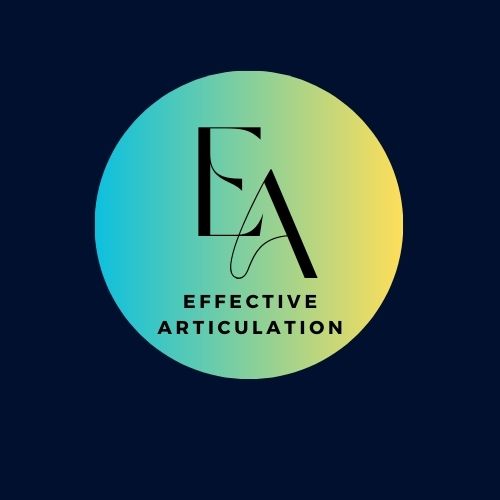Public speaking can be intimidating, but it’s also one of the most valuable skills you can develop. Whether you want to excel in your career, express yourself more confidently, or simply overcome stage fright, learning how to speak in public is a game-changer.
The good news?
You don’t have to be a natural-born speaker to succeed.
Like any skill, public speaking improves with practice and the right approach.
If you’re just starting out, don’t worry!
Here’s a step-by-step guide with actionable tips to help you become a confident speaker.
1. Start Small and Build Confidence
One of the biggest misconceptions about public speaking is that you have to start on a big stage.
You don’t! The best way to begin is by speaking in low-pressure situations and gradually increasing the difficulty.
How to Start:
- Talk in front of a mirror: Observe your facial expressions, hand movements, and posture to develop a more natural speaking style.
- Record yourself: Listening to your voice will help you identify areas for improvement, such as unclear pronunciation, filler words, or lack of enthusiasm.
- Practice with friends or family: Having a small, familiar audience will help you ease into speaking without feeling overwhelmed.
- Engage in casual storytelling: Try sharing personal experiences or thoughts in a structured way to get used to speaking clearly and concisely.
The more you practice in a safe environment, the more comfortable you’ll feel when speaking to a larger audience.
Best Public Speaking for Beginners
Overcoming Common Public Speaking Mistakes
2. Join a Public Speaking Group

You don’t have to learn public speaking alone. One of the best ways to improve is by joining a group like Toastmasters International.
These organizations provide a supportive environment where you can practice speaking, receive constructive feedback, and build confidence over time.
Benefits of Joining a Speaking Group:
✔️ Regular practice opportunities with real audiences.
✔️ Constructive feedback to identify strengths and areas for improvement.
✔️ Exposure to different speaking styles and techniques from experienced speakers.
✔️ The ability to track your progress and refine your speech delivery over time.
If joining a group isn’t an option, look for online communities or practice through video calls with friends.
Practicing in a group setting helps you overcome the fear of speaking in front of others and provides valuable insights to improve your style.
How To Join Toastmasters And Transform Your Public Speaking Skills
Check out the review of AmazingPublicSpeaking.com
3. Focus on One Idea at a Time
A common mistake beginners make is trying to say too much at once. This leads to rambling, confusion, and losing the audience’s attention.
How to Simplify Your Speech:
✅ Identify a single main idea to focus on.
✅ Break it down into three key points for clarity.
✅ Use real-life examples, stories, or metaphors to reinforce the idea.
For instance, if you’re talking about time management, focus on just three strategies: prioritization, avoiding distractions, and setting deadlines. This makes your message easier to remember and more impactful.
A clear, structured speech is easier to deliver and more engaging for your audience.
Top Recommended Public Speaking Skills Books on Amazon: Elevate Your Speaking Game!
4. Read Aloud to Improve Clarity

Your voice is one of your most powerful tools in public speaking. But many beginners speak too fast, mumble, or lack vocal variety.
A great way to fix this is by reading aloud regularly.
How to Practice:
- Choose a book, article, or speech and read it out loud every day.
- Pay attention to pronunciation, tone, and pauses.
- Experiment with different emotions and emphasis to develop vocal variety.
- Record yourself and listen for areas where you can improve.
Over time, this practice will help you speak clearly and confidently without rushing through your words.
The more you read aloud, the better your voice control and articulation will become.
How To Use Humor And Storytelling In Public Speaking : A Winning Combination
5. Watch and Learn from Great Speakers
One of the best ways to accelerate your learning is by studying great speakers. You can learn a lot by watching TED Talks, motivational speakers, and business leaders.
What to Observe:
✔️ How they open their speeches (hooks, questions, or personal stories).
✔️ Their body language and hand gestures that complement their words.
✔️ The way they use pauses, tone, and emphasis for impact.
✔️ How they engage with the audience through eye contact and interaction.
Some great speakers to watch include Simon Sinek, Brené Brown, and Barack Obama.
Learning from experts will give you ideas on how to craft your own speaking style.
Best Ways To Build A Strong Personal Brand As A Public Speaker
How To Make Money With Public Speaking
6. Practice Deep Breathing for Confidence
If you get nervous before speaking, you’re not alone! Even experienced speakers feel stage fright. One of the simplest ways to calm your nerves is through deep breathing exercises.
How to Do It:
- Inhale deeply through your nose for 4 seconds.
- Hold your breath for 4 seconds.
- Exhale slowly through your mouth for 6 seconds.
- Repeat this 3-5 times before speaking.
This slows your heart rate, relaxes your body, and makes you feel more in control.
Controlled breathing helps you project confidence and reduces anxiety before a speech.
Leveraging AI Prompts To Enhance Communication Skills
How To Speak Confidently And Communicate Effectively
7. Use a Simple, Conversational Tone

Many beginners think public speaking requires a formal, robotic tone. In reality, the best speakers sound natural and conversational.
How to Sound More Conversational:
✅ Imagine you’re talking to a friend.
✅ Use simple, everyday language.
✅ Speak with enthusiasm and energy.
✅ Avoid memorizing a script—focus on key points instead.
Your audience will connect with you more easily if your tone feels relaxed and authentic.
Speak as if you’re having a chat rather than delivering a lecture.
Effective Articulation Techniques For Confident Public Speaking
Final Thoughts
Public speaking is a skill that anyone can develop with practice and persistence. By starting small, joining a speaking group, focusing on clear ideas, improving your voice, learning from experts, and using breathing techniques, you can become a confident and engaging speaker.
Remember, the key to success is consistent practice. The more you put yourself out there, the more comfortable you’ll feel. So, take a deep breath, believe in yourself, and start speaking!
I hope you found this post helpful! Please let us know what you think by leaving a comment below.
If you have any topics, you’d like to cover in future blog posts, please share your suggestions in the comments.
Disclosure: If you click on the affiliate links provided in this article and purchase the product, I will receive a small commission from the company of the product. You will not pay anything extra for your purchase. You can read the affiliate disclosure for more information.



8 thoughts on “How To Start Learning Public Speaking: A Beginner’s Guide”
This post is a fantastic beginner’s guide to mastering the art of public speaking. Public speaking can indeed be intimidating, but this guide breaks it down into manageable steps that anyone can follow. Two points that stood out to me are:
4. Reading Aloud to Improve Clarity:
This practice has been incredibly helpful for me. It not only enhances articulation but also improves pacing. Recording oneself and listening back can be eye-opening—you become aware of habits you didn’t know you had.
5. Watching and Learning from Great Speakers:
Observing the techniques of accomplished speakers can be incredibly inspirational. Their body language, use of pauses, and audience engagement are all aspects we can learn from. Simon Sinek’s talks, in particular, are always insightful.
Overall, the key takeaway is that public speaking is a skill anyone can develop with consistent practice and a positive mindset. It’s about starting small, being persistent, and embracing every opportunity to improve.
Thanks for sharing!
Thank you Alice!
This article redefines the journey into public speaking as an accessible, step-by-step process rather than an insurmountable challenge. It transforms the daunting prospect of addressing an audience into a series of manageable, practical actions from practicing in front of a mirror and recording your voice to joining supportive groups like Toastmasters. The guide doesn’t just offer techniques; it instills a mindset that every conversation, every reading aloud, and every deep breath is a building block toward confident, authentic communication.
More than a beginner’s manual, the piece invites you to embrace your natural voice and harness it as a powerful tool for connection. It encourages you to focus on a single idea, use real-life stories, and adopt a conversational tone that resonates with your audience. By learning from renowned speakers and integrating simple practices like deep breathing, you’re empowered to transform nervous energy into a compelling stage presence. Ultimately, this guide is a call to action an invitation to step into your potential, speak your truth, and let your voice be heard with clarity and passion.
Thank you for your thoughtful comment! I love how you highlight the transformation of fear into confidence through small, intentional steps. Have you tried any of these techniques in your own public speaking journey?
Public speaking is such a valuable skill, and this article does a great job of breaking down practical steps for beginners. The emphasis on starting small and building confidence is especially important—many people feel overwhelmed by the idea of speaking in front of a large audience, but gradual exposure really helps.
I found the section on deep breathing techniques particularly useful. Do you think certain breathing exercises work better than others when dealing with stage fright, or is it more about finding what personally feels effective?
Also, the suggestion to observe great speakers is a great tip. In your experience, what are the most common habits that beginners struggle with when trying to develop their speaking style?
This was a great read with actionable advice! Public speaking is definitely a skill that improves with practice, and this guide makes the learning process feel approachable and achievable.
Thank you for your thoughtful comment! I completely agree that gradual exposure is key to building confidence in public speaking. Regarding breathing exercises, some find diaphragmatic breathing most effective, while others prefer box breathing. It really depends on what calms the nerves best. As for common beginner struggles, pacing and filler words tend to be big ones. Glad you found the guide helpful! ????
As someone who is actively trying to improve my public speaking skills I am truly appreciative of the guidance and techniques provided. Sometimes we overlook the power of simplicity and this resonated with your suggestions regarding starting small, reading aloud, studying accomplished speakers etc.
For me focus on breathing and tone are factors I need to work on. What are your recommendations regarding helping persons like me who have a higher pitched voice. As you know we can sometimes sound pretty irritating but there must be ways to overcome this.
Looking forward to your suggestions.
You’re absolutely right. Breathing and tone play a huge role in effective speaking! To soften a high-pitched voice, try practicing lower resonance by speaking from your chest rather than your throat. Humming exercises and controlled breathing can also help create a richer, more grounded tone. Have you tried recording yourself to track progress?